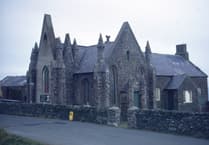The Manx Wildlife Trust currently manages 24 nature reserves across the Isle of Man, of which nine are open to the general public.
These help us to preserve and to protect the fabulous and varied wildlife found in our island.
The reserves total almost 300 acresof land to help conserve some of the best habitats for birds and animal life, and to protect our vulnerable species. We encourage locals and visitors alike to vist them and to enjoy their tranquility, and to cherish the sights and sounds found on them
Earystane Nature Reserve
map reference SC235 715 lat and long 54â?° 06’33.85 N 04â?° 42’04.94W
Access. Take the A27 at Colby heading towards Dalby and Foxdale, travel approximately 1 mile up this road and you will come to a 90â?° bend to the right, park up on the left where the road widens. Please be careful when you walk back down to this bend along the road as it is a blind bend, take the minor road that bears to the right on this bend as you walk back to it. You will see a grass roadway leading to a wooden gate with the reserve sign on it.
This reserve takes about 1/2 hour to walk along the path, but is well worth spending some time sitting in the bird hide.
There is wheel chair access to the bird hide only.
The reserve contains a small area of grassland and a circular boardwalk through a Moaney area.
Wetland areas are named Moaney (peaty in Manx gaelic) in the south but would be called Curragh in the north. Originally part of Ballachrink (hill farm in Manx gaelic), the site was sold to Arbory Parish Commissioners and half of it used as a tip until the 1970s.
Take care on the board walk as they can be very slippery in damp conditions.
This reserve is a little hidden gem in a rarely explored area of the Island near to the beautiful Colby Glen.
It is full of wildflowers at this time of year and on a sunny day the grassland area is full of butterflies.
In the grass land look and listen for the yellow rattle. This wildflower depletes the amount of grasses in an area as it is hemi-parasitic (it takes nutrients from the roots of grasses around it!) and so is excellent to help establish wildflower meadows.
When the yellow tube like flowers die back the seed cases are capsule like and the seeds inside rattle around them.
Also in this area knapweed grows, its flowers are an excellent nectar source for bees, butterflies and beetles, and goldfinches love to feed on the seeds.
This plant is tall and thistle like in appearance with purple/blue flowers which when pollinated turn into fluffy seed heads.
On the walk down to the Moaney area look up at the oak tree branches and you will see the ball shaped oak apple galls.
These are created by gall wasps laying eggs in the leaf buds inside which the developing wasp larvae feed. These galls used to be collected and ground down to make ink in the middle ages.
Within the Moaney area the grey willow is covered in foliose lichens which cling to the branches with flat lobed shaped leaves.
Here they range from a pale sage green to bright apple greens and compete for branch space with the mosses.
Also look for the pale coloured spikes of the Heath spotted orchids with their beautiful patterns of stripes and dots held up on long slender stalks.
Visit our website to download a wildlife spotting sheet to take with you when you visit this reserve.
by Dawn Dickens
twitter:@mwislandlife


.jpeg?width=209&height=140&crop=209:145,smart&quality=75)

.png?width=209&height=140&crop=209:145,smart&quality=75)